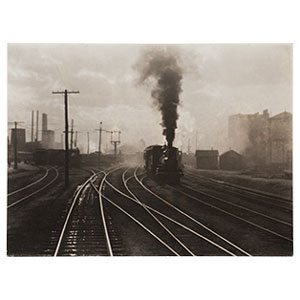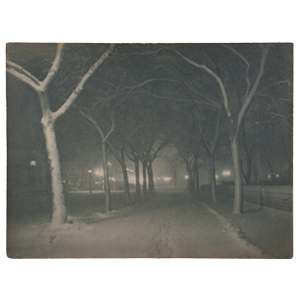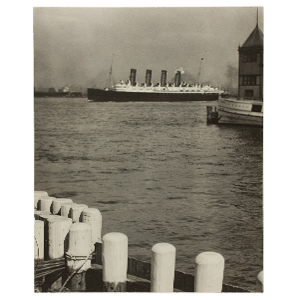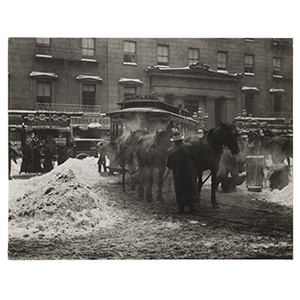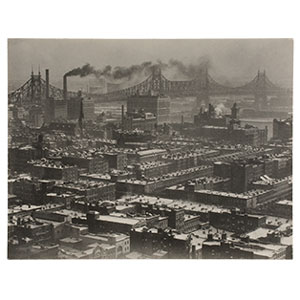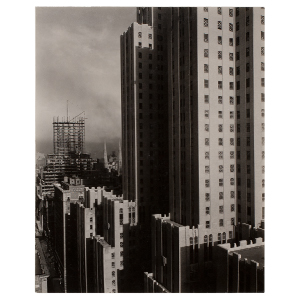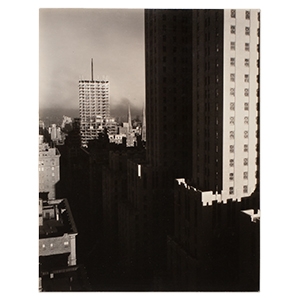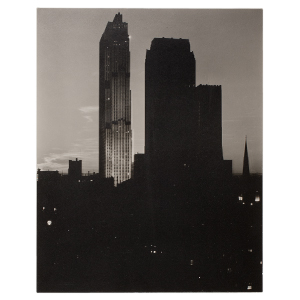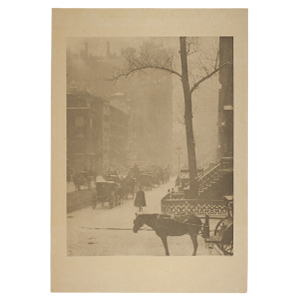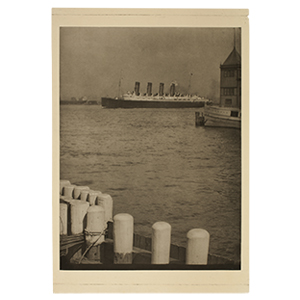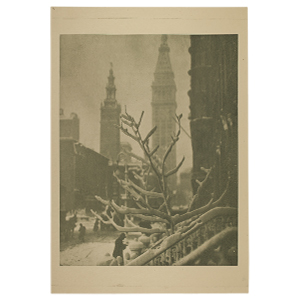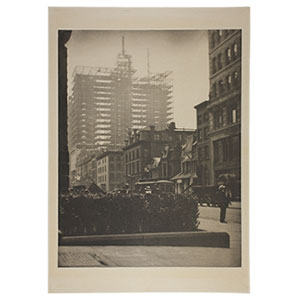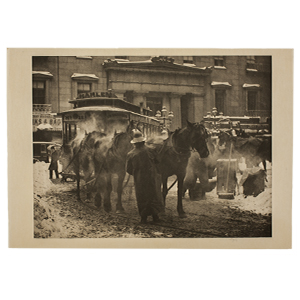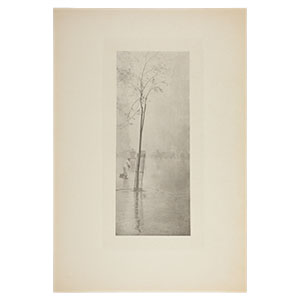New York Views
Beginning when he was a young man newly returned from studying in Germany and continuing until the last years of his life, Alfred Stieglitz photographed the city of New York. These images document the city’s transformation from a roughshod port to a sleek metropolis. As he wrote, “My New York is the New York of transition—The Old gradually passing into the New. . . . The Spirit of that something that endears New York to one who really loves it—not for its outer attractions—but for its deepest worth—& significance. —The universal thing in it.”[1]
Stieglitz’s early photographs capture everyday life on the sidewalks of the rapidly modernizing city. Instead of manipulating the prints or negatives, he let snow and rain—and often the steam and smoke of industry—create the soft, atmospheric effects valued by Pictorialists. In his 1897 photogravure portfolio, Picturesque Bits of New York and Other Studies, Stieglitz juxtaposed scenes from the city alongside those from Venice and Paris, placing New York in the pantheon of the world’s great scenic cities.
Later, Stieglitz would photograph the views from his windows at An American Place and the apartment he shared with Georgia O’Keeffe on the thirtieth floor of the Shelton Hotel. In these photographs the city is seen from a distance, captured in a modern, “straight” style. The bustling turn-of-the-century city life found in the earlier works—lively street scenes of laborers and the changing city—is replaced by the cool, industrial forms of Midtown’s steel-frame skyscrapers.
[1] Alfred Stieglitz to Hamilton Easter Field, Nov. 16, 1920, Alfred Stieglitz/Georgia O’Keeffe Archive, Yale Collection of American Literature, Beinecke Rare Book and Manuscript Library, Yale University, box 19, folder 429.

